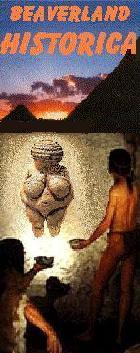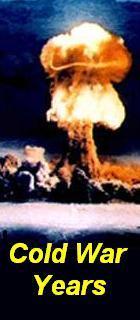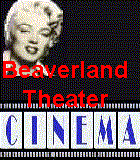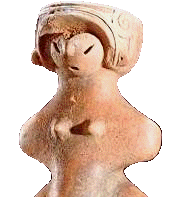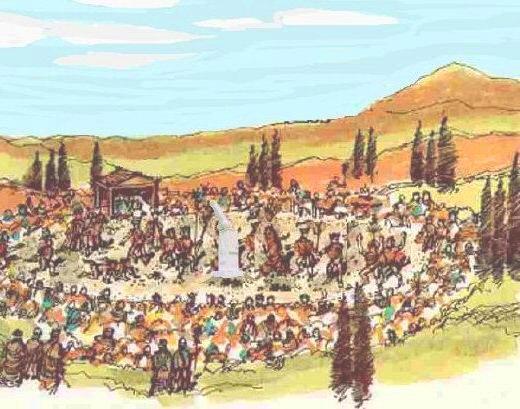| ||||||||||||||||||||||

 |
Fertility Rituals
at Asukaza Shrine and Dithyrambos by Akira Kato
August 2, 2003
An ancient, drunken, dance-chant fertility ritual that celebrated the birth of the wine god, Dionysus and the vaunted fruit of the vine, developed, around the ninth and eighth centuries B.C., with the dithyrambos. The dithyrambos was performed yearly at four tribal festivals (called orgia--from which comes our word orgy). These Dionysian revels were held outside town, probably in and around broad, earthen threshing circles, where, at harvest time, sheaves were pounded to separate grains from the chaff. Such circles can still be found in rural Greece today. A sixteen-foot phallos (penis) was erected in the center of the circle as a focal point for the orgiastic festivities. The theater of Dionysus was, like all ancient Greek theaters, an open-air auditorium and, due to the lack of adequate artificial lighting, performances took place during the day. Scenes set at night had to be identified as such by the actors or the chorus; the audience, upon receiving these verbal cues, had to use its imagination. In general, the action of tragedy was well served by presentation in an open-air theater since interior scenes, which are common in our typically indoor theaters, are all but non-existent in tragedy. The action of a tragedy normally takes place in front of palaces, temples and other outdoor settings. This seemed natural to the ancient audience because Greek public affairs, whether civic or religious, were conducted out of doors as was much of Greek private life due to the relatively mild climate of the Aegean area. Greek Theatre at EpidarusThe theater of Dionysus in the earliest days of tragedy (late sixth - early fifth century) must have consisted of only the most basic elements. All that was required was a circular dancing area for the chorus (orchestra) at the base of a gently sloping hill, on which spectators could sit and watch the performance. On the other side of the orchestra facing the spectators there probably stood a tent in which the actors could change their costumes (one actor would play more than one part). This is suggested by the word skene which means `tent', and was used to refer to a wooden wall having doors and painted to represent a palace, temple or whatever setting was required. The wall, which eventually became a full-fledged stage building, probably acquired this name because it replaced the original tent. Aristotle tells us that tragedy developed from the dithyramb but does not tell us how-, all we know is that the addition of a masked actor to the chorus by Thespis and of another by Aeschylus resulted in the creation of the first theater of the Western world. The roles were played by men and the mask was a vital tool for the actor who usually played multiple roles some of which were women. Greek ChorusFor the modern reader the chorus is one of the more foreign elements of tragedy. The chorus is not one of the conventions of modern tragedy. We associate the chorus with such musical forms as opera, musical comedy and oratorio. But tragedy was not just straight drama. It was interspersed with songs sung both by actors and chorus and also with dancing by the chorus. The modern parallel for tragedy is actually opera (along with its descendant, musical comedy), which is a dramatic form containing song and dance. The first function of a tragic chorus was to chant an entrance song called a parodos as they marched into the orchestra. Once the chorus had taken its position in the orchestra, its duties were twofold. It engaged in dialogue with characters through its leader, the Coryphaeus, who alone spoke the lines of dialogue assigned to the chorus. The tragic chorus's most important function was to sing and dance choral songs called stasima (singular = stasimon). The greater the choral lyric part in proportion to the spoken/actor's parts, the earlier the play. In later plays, the chorus chiefly provides background commenting on the action. Tradition says there were as many as 50 in the chorus in early drama; Aeschylus reduced it to 12 but Sophocles made it 15.
| |||||||||||||||||||||
| ||||||||||||||||||||||




